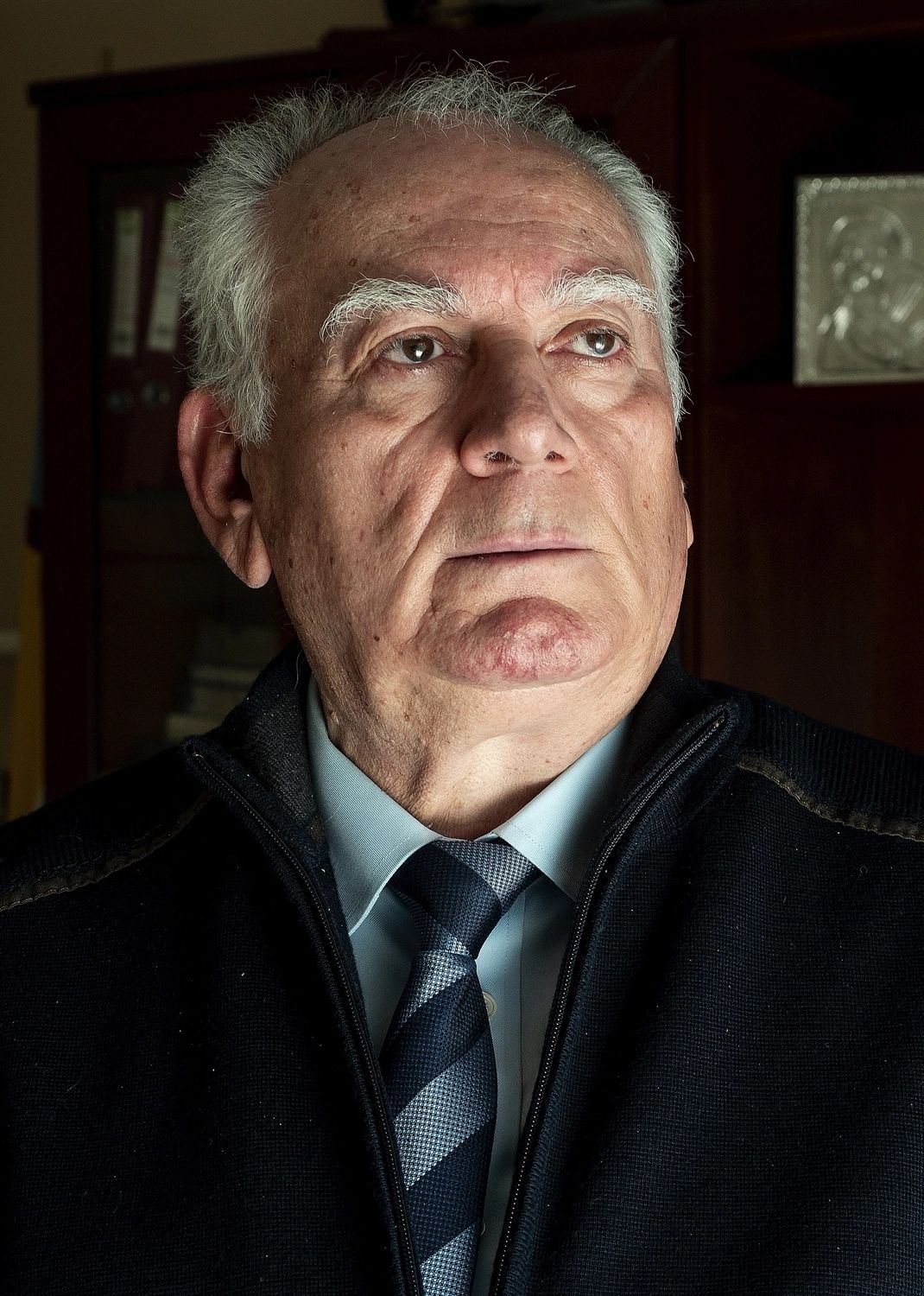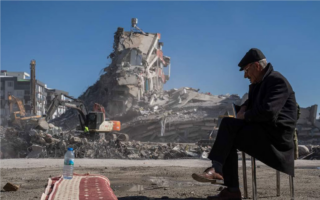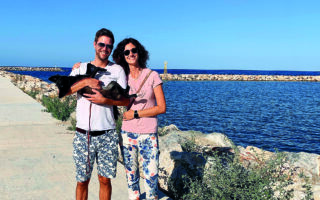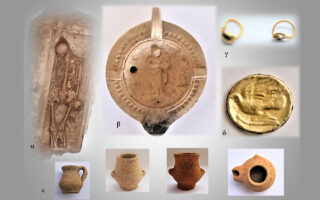‘Bailing out is not a decision you take lightly’
News of fatal F-4 crash took ex-fighter pilot Anastasios Katsimbras back to 1991
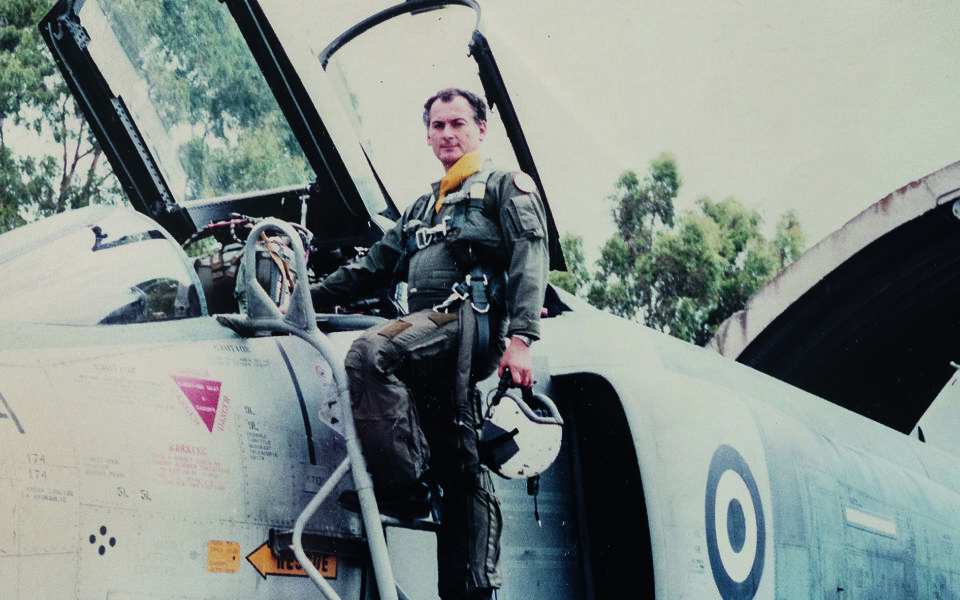
When he heard the news about the crash of the Hellenic Air Force F-4 Phantom at sea and the deaths of the two pilots, he felt as if he had lost two family members, Anastasios Katsimbras says. He had flown the same fighters years ago.
As a flight instructor in the early 1990s, he had barely survived when a similar plane caught fire in flight and he had to bail out. “These kids started with the same dreams that we had,” he says. “When you enter that plane, you forget everything. Both man and machine test their limits.”
Katsimbras, 68, a retired lieutenant general, spent most of his Air Force career as a fighter pilot in the 117th Combat Wing at Andravida in western Greece. On his home desk, next to Phantom scale models, old photos and other mementos, he keeps the clip that saved his left leg when he bailed out over the sea.
There is not much to say about the precise conditions of the accident that cost the lives of 31-year-old Captain Efstathios Tsitlakidis and Lieutenant Marios-Michail Touroutsikas, 29. The incident is so recent, investigations are expected to last a long time and any speculation as to what happened is too risky. “The investigation committee’s work is very difficult. There is not much recovered debris, it would be different if the plane had crashed on land,” says Katsimbras.
The explosion
Katsimbras had a serious brush with death while flying a Phantom in September 1991. He was in the back seat but, as a flight instructor, he was the decision maker, especially in case of an emergency. He recounts an explosion in the combustion chamber. “The burning fuel was escaping, like a torrent, flowing toward the back,” he says. “Bailing out is not a decision you take lightly, you must be convinced that the plane is condemned, that there is no surviving in it. You follow all the standard procedures, some specific actions which you do from memory, without opening a check list.”
Katsimbras remembers he momentarily lost consciousness on being ejected, coming to a few seconds later as he was hurtling through the air: ‘Now, it’s God and the seat,’ he thought
Katsimbras switched off the left engine, but the fire did not abate. He then switched off the right engine, to no avail. “I was thinking, if the fire is extinguished by shutting off the right engine, I will switch on the left and attempt a landing. It was the case of a drowning man clutching at a straw.” With the fire persisting, Katsimbras and the trainee pilot had only one option: They took escape positions, pulled the handle and heard the bang of the rocket motor. He remembers he momentarily lost consciousness on being ejected, regaining it a few seconds later as he was hurtling through the air: “Now, it’s God and the seat,” he thought.
The parachutes opened and the two pilots fell into the sea, about 40 nautical miles west of the site of the recent accident. They were officially missing for three hours, while they were battling the waves. Katsimbras remembers that the wing commander “took the wise decision” to have other Phantom jets take off and fly over the site of their accident to locate the pilots. Two weeks later, Katsimbras was flying again: “I had 20 trainees, I was an operations officer. Stop flying? No way,” he says.
The Hellenic Air Force ordered the first Phantom jets in 1972. They were delivered to the 117th Combat Wing on April 5, 1974. The US delivered 28 F-4E jets to Greece in 1990. The aircraft were structurally strengthened and their avionics upgraded in the late 90s.
“It is a strong fighting platform,” Katsimbras said. “It is a twin-engine two-seater and it is great to have a co-pilot to cooperate with in the air. It is a hardy fighter that saw action in Vietnam, the Middle East and the Gulf War and was acquired by 52 countries. It has twin capabilities, interception and bombardment, but it is not advisable to get into a tight airfight; the F-16 is more maneuverable,” he adds.
Katsimbras’ last flight was on June 15, 2007, at Andravida. He later headed the Cyprus National Guard’s Air Command and retired in 2011.
He explains that demands on pilots remain the same, no matter how many new generations succeed one another at the controls and irrespective of system upgrades. “In an air fight, the g-force increases your weight rapidly, your cheeks fall, you cannot lift your hand from the controls, that is why the manufacturer has placed all the controls on the control stick and the integrated control panel. That’s why flight and physical training are constant… fighter pilots must be champion athletes,” Katsimbras explains. They must also avoid indulging in drinking and smoking and be careful with their diet.
“There are certain guidelines and a six-month program that includes how many times a pilot will fire, intercept, hit naval targets and how many fire drills they will do during that period,” he adds. Katsimbras has mourned friends who died in air accidents. What is it that keeps people like him flying fighter planes despite the dangers? “Our twin passions: love of being airborne, and love of country,” he replies.
